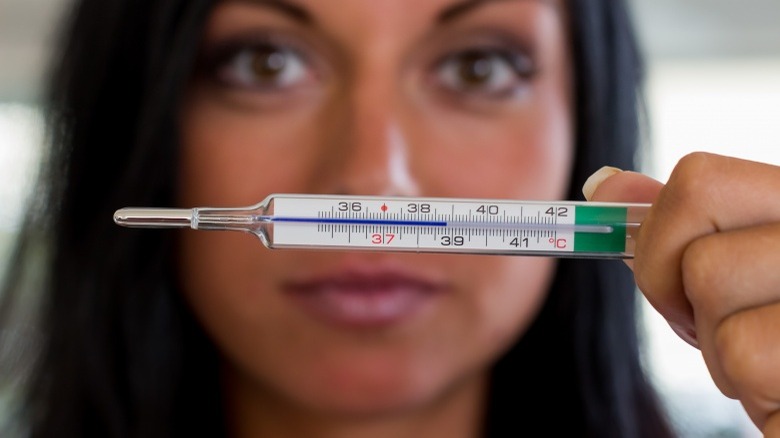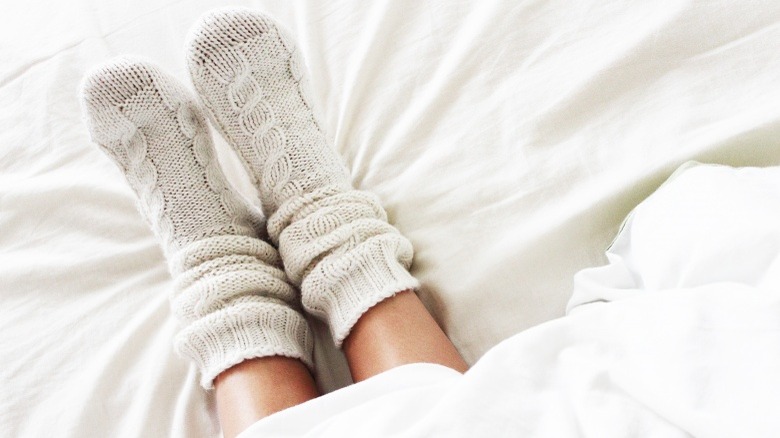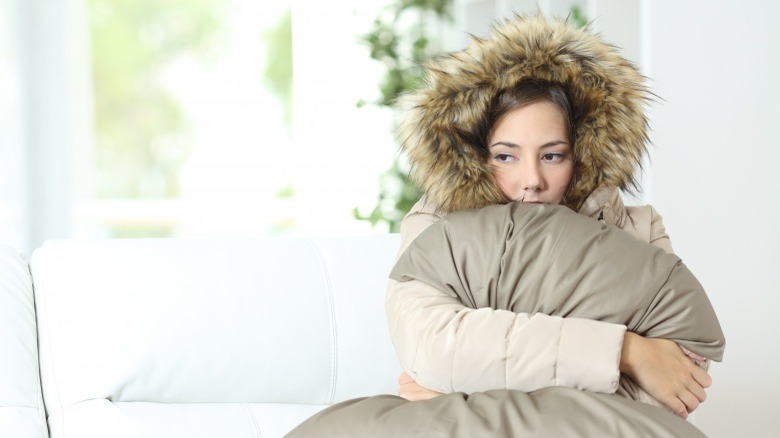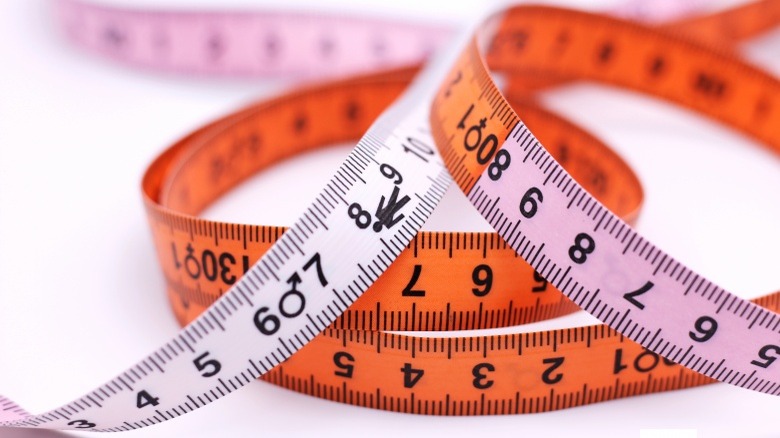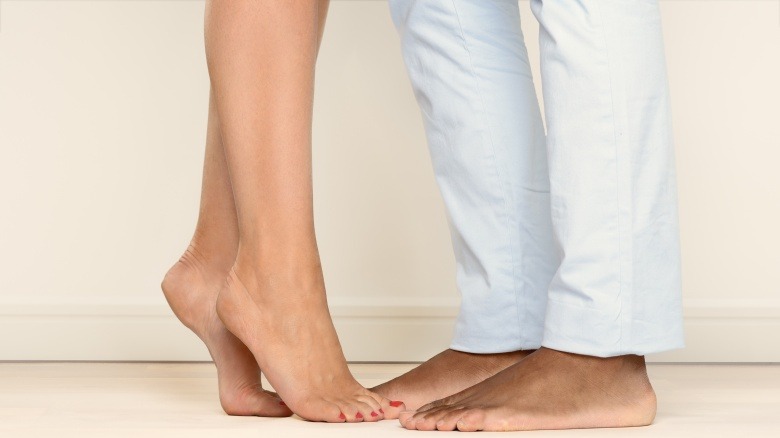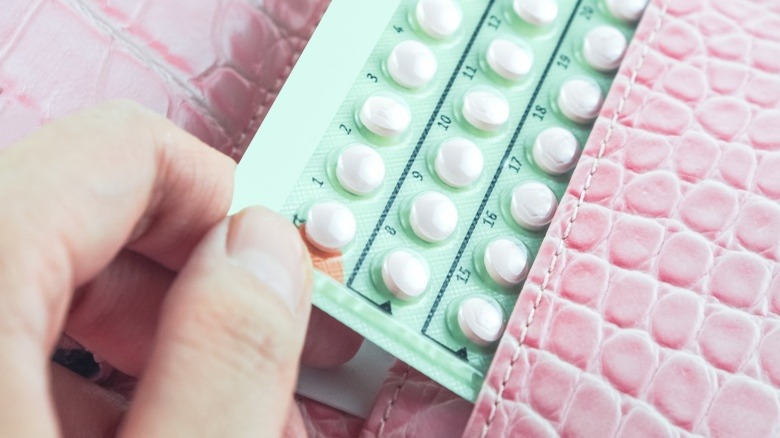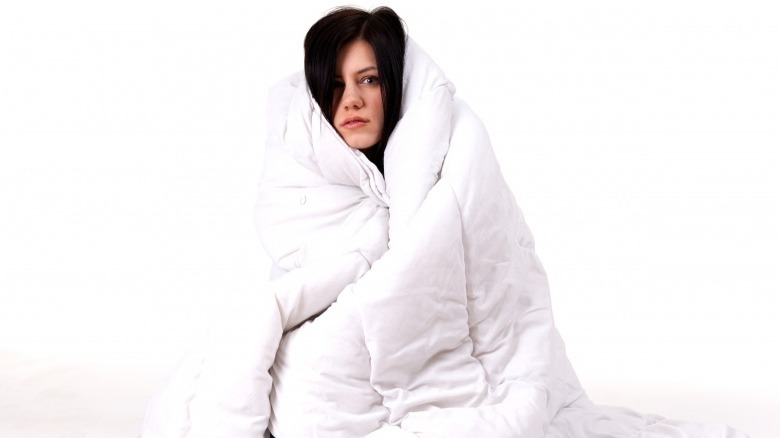Women Are Colder Than Men For Very Real Reasons
One battle that will probably never end is the battle of the thermostat in a space shared by men and women. Men are always turning it down, and women are always two steps behind them, turning it right back up again. Despite theories to the contrary, however, women are not just being weak or wasteful — there are actual, scientific reasons why they often find themselves feeling much colder than the men in the same room.
Core body temperatures
The biggest factor in the different perceptions of temperature between men and women is that women are, in fact, just warmer to begin with. A study done by the University of Maryland School of Medicine in 1992 looked at core body temperatures of both men and women. Their results found that though both men and women had core temperatures that varied throughout the day, women's core temps were, on average, slightly higher than men. It stands to reason, then, that since women are a bit warmer to start with, cool temperatures will feel even cooler to females than to males.
Colder extremities
A higher core temperature doesn't always mean a warmer body in general. Women's icy-cold extremities are a long-running joke between married couples everywhere at bedtime, but there's actually some science to back up the phenomenon. In 1998, researchers at the University of Utah found that though women's core body temperatures were higher on average, their hands were consistently colder. And it wasn't a subtle change — the study found women's hands to be about three degrees cooler than men's.
This difference in extremity temperatures actually means women are better at conserving heat than men, though it also means we feel the cold that much more. Women's bodies are more able to pull heat back to their organs to conserve heat during cold conditions. When that happens, though, our hands and feet pay the price for keeping essential organs at a warmer running temp. This explains why, when walking through a cool office, you'll see many more women than men rubbing their hands together to get warm.
Metabolism
Men naturally have higher metabolic rates than women — a fact that has been annoying women for ages. But that doesn't just mean they have an easier time controlling their waistlines. The fact that the metabolism of most men runs at about 23 percent higher than women's also means women tend to be a lot colder than men. Essentially, metabolism is the way our body burns calories for fuel, and in the process, heats our bodies. Since our bodies are burning less fuel, it makes sense that we'd be the chillier of the species.
Fat to muscle ratio
The way our bodies are composed also has a lot to do with how warm we feel. In general, men have more muscle and less fat than women. Since muscle is better at generating heat, this gives men an advantage when it comes to keeping warm in cool temps. While fat does conserve heat, it traps it at the core, below the skin, meaning you'll still feel cold when your skin cools down — even if your core is still at a warm temperature.
Smaller size
Body size also has a lot to do with how cold a person tends to feel. On average, men are larger than women, both in height and weight. Since women tend to be smaller, they usually have a larger surface area to volume ratio, meaning more heat is lost at a faster speed through their larger surface area, according to Brad Fiero, faculty member at Pima Community College. In relation, that smaller volume means less retained heat.
Menstruation
As if it doesn't have enough control over our lives, women's body temperatures tend to fluctuate throughout their menstrual cycles due to rising and falling hormone levels. This means depending on what time of the month it is, they may be even more affected by cool temperatures than normal. The situation is exacerbated even more when women take birth control. One 2001 study found that women who took oral contraceptives had raised body temperatures during some parts of their cycles.
Different perceptions
Another explanation for women being colder than men is that women just feel the cold differently than men do. According to professors David W. Niesel and Norbert K. Herzog of Medical Discovery News, "When women feel cold, they constrict blood vessels near the skin surface to retain core body heat, but it makes them feel colder." Basically, our bodies just have a totally different physical reaction to the very same temperatures.
Office temps and attire
Women who spend their days in office buildings tend to find themselves in a rough spot when it comes to dressing for the weather. A 2015 study published in Nature Climate Change finally proved what women have known all along — office temperatures are designed for the comfort of a man. According to the study, most office buildings set their thermostats according to outdated formulas based on the metabolic rates of men, put in place in the 1960s. This might have made sense decades ago, when most offices were predominately populated by males, but it's much less acceptable today, when women are heading to offices in droves every morning.
The study also revealed that the longstanding "thermal comfort model" employed by offices everywhere takes into consideration another factor: clothing insulation levels. Basically, it allows for the fact that men wear suits, and suits can make them hot. Pair the chilly office temps with women's regular office attire of dresses, skirts, and thin blouses, and you'll begin to understand what all the shivering is about — and why so many women have heaters under their desks, gloves and scarves stashed in their drawers, and a heavy cardigan thrown over their chairs. And this isn't just true in the winter, when the heat is never turned up quite as high as you'd like it. In the summer months, the air conditioning usually gets cranked up to near-freezing levels, blowing theories of energy conservation right out the window. Suddenly, wearing a suit jacket every day doesn't sound like such a bad idea, does it?

